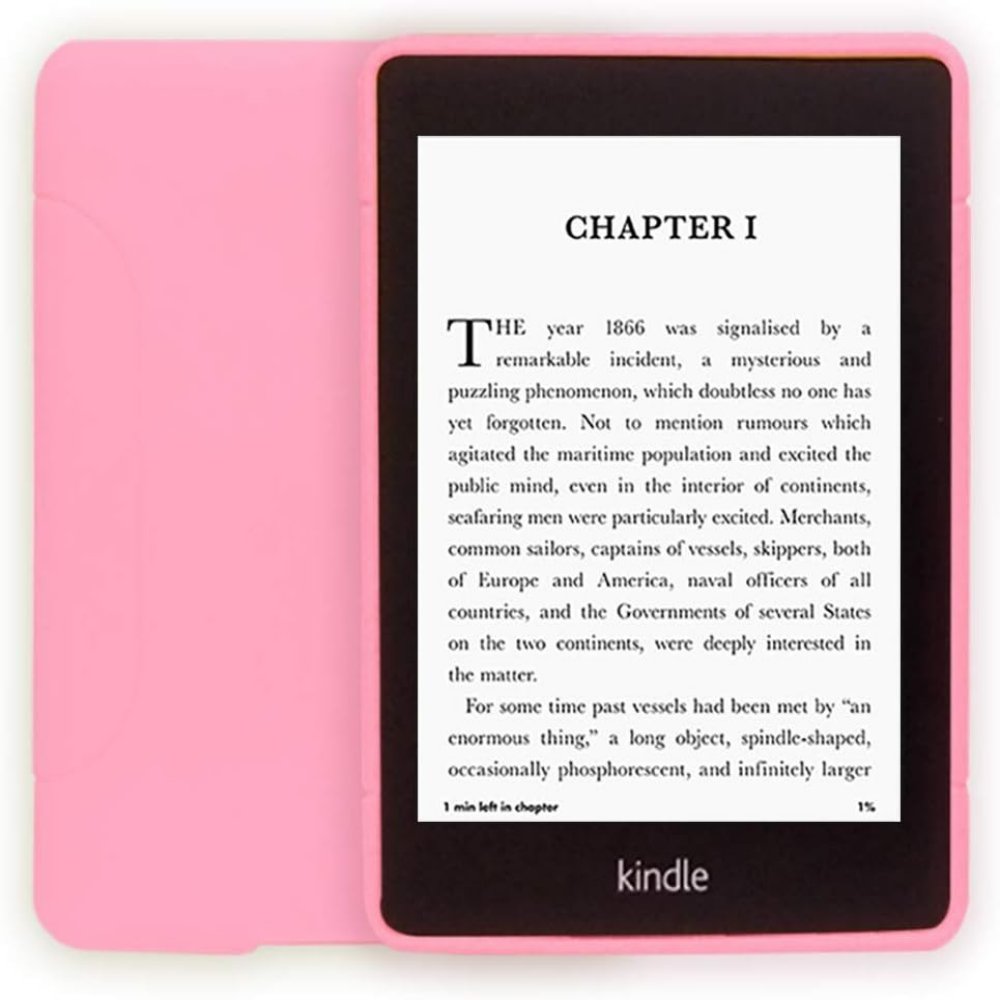Introduction to Kindle Book Pricing
Amazon’s Kindle platform has transformed how readers access books. Pricing for Kindle books can vary greatly. Many factors come into play when setting prices for eBooks. These include genre, author popularity, and publication date. Understanding these factors helps both readers and authors navigate Kindle pricing.
A key aspect is Amazon’s pricing structure. Amazon offers different price points for Kindle books. Authors and publishers can choose from a range of prices. Some books are even available for free during promotional periods.
Readers often wonder how much books on Kindle cost. Prices can start as low as a dollar and go up to fifteen dollars or more. Yet, the average cost is typically less than a physical book. This is a big draw for digital book enthusiasts. Amazon also runs Kindle Daily Deals. This allows readers to purchase titles at a reduced price for a short time.
For authors and publishers, understanding Kindle book pricing is vital. It affects their earnings and market reach. Setting the right price can help maximize profits and readership. Authors often adjust prices based on reader response and market trends.
Overall, Kindle book pricing is a dynamic and critical aspect of the eBook market. It is shaped by various factors that authors, publishers, and readers must all consider.

Factors Influencing Kindle Book Prices
The cost of Kindle books can hinge on many elements. Some key drivers affect how publishers and authors set these prices. Understanding these drivers is crucial for anyone in the eBook market. Below, we delve into the main factors that influence Kindle book pricing.
Supply and Demand Dynamics: Like any market, the law of supply and demand plays a pivotal role. Books in high demand may command higher prices. Conversely, books with less interest might be priced lower to attract readers.
Author’s Fame and Track Record: Well-known authors often price their books higher. Their established fan base is typically willing to pay more. New or lesser-known authors may price books lower to draw in a new audience.
Book Genre and Popularity: Some genres, like romance or thrillers, are more popular on Kindle. They might be priced competitively. Niche genres may have a smaller audience and could either command a premium or be strategically priced to increase visibility.
Length and Quality of Content: Longer books with more content may be priced higher. However, quality also plays a significant role. A well-reviewed, highly-rated book can be a justification for a higher price point.
Publishing Costs Recovered: Self-published authors have to consider the costs incurred during the creation of their book. These costs may include editing, formatting, and cover design. These expenses can influence the final price.
Promotions and Discounts: Publishers and authors often use price promotions to boost sales. Short-term discounts or inclusion in subscription services can affect the overall pricing landscape.
In summary, Kindle book prices are shaped by a complex interplay of factors. Authors and publishers must weigh these factors carefully to set prices that attract readers while also ensuring profitability.
Average Cost of Kindle eBooks in 2025
In 2025, Kindle eBook prices show a broad range. Many factors influence these costs, as outlined earlier. Yet, customers often look for an average figure to guide their budget for digital reads. Generally, the average cost lands below traditional print editions.
For typical fiction and non-fiction titles, prices may hover around $3 to $9. This is an appealing price point for many readers. It reflects both the desire for affordability and the value of the content provided. eBooks priced above $10 are less common. They tend to be from established authors or special editions with extra features.
The low-end of the spectrum often features new authors or promotional deals. Prices might dip to $0.99 or even free for a short period. These strategies boost visibility and attract initial reviews for budding authors.
Readers looking for academic texts or specialized subjects may find higher tags. This is due to limited audience and substantial research behind the book. Such eBooks can range from $15 to $30, sometimes more.
Children’s books and shorter novellas may see reduced prices. They are often set at $1.99 to $4.99. The lower price matches the shorter length and specific audience scope.
In essence, during 2025, the average cost of Kindle eBooks takes into account many elements. These include genre, length, author popularity, and market trends. Deals and subscriptions also play a role in shaping these prices. Readers and authors alike focus on finding and setting prices that match expectations, quality, and value. The result is a dynamic, competitive market for Kindle eBooks, providing a wide array of choices for consumers.

Comparison of Kindle Book Prices and Physical Books
When considering how much are books on Kindle versus physical books, there’s a clear difference. Physical books often cost more due to production and distribution expenses. These include printing, warehousing, and shipping. Kindle eBooks cut out these costs. This often results in lower prices that appeal to budget-conscious readers.
Another point to consider is the option of reselling. You can’t resell a Kindle eBook, but you can resell a physical book. For some, this potential to recoup costs makes physical books more attractive despite the higher price tag.
However, Kindle eBooks offer unique advantages. They are instantly deliverable and don’t require physical storage space. They are also environmentally friendly since they don’t require paper. For readers who consume many books, these benefits can outweigh the lack of resale value.
Digital reading also aligns with current tech trends. People value the convenience of carrying multiple books in one device. The ease of purchasing and accessing eBooks anytime boosts their popularity. Meanwhile, physical books remain cherished for their tangible qualities.
In summary, Kindle book prices are often lower than their physical counterparts. The cost saving on production and logistics passes down to the customer. This, along with the convenience and eco-friendly nature of eBooks, makes Kindle an attractive option. Yet, the feel of a real book and the ability to resell it keeps physical books in the race.
Pricing Strategies for Authors and Publishers
To succeed on Kindle, authors and publishers must use smart pricing strategies. Here are key tactics used:
1. Consider the Audience: Authors must know their readers. Prices should fit what the audience can afford.
2. Evaluate Book Length and Quality: Longer, high-quality books often fetch higher prices. Set a price that reflects your book’s value.
3. Monitor the Competition: Check other books in your genre. Price yours competitively to stand out.
4. Flexibility with Promotions: Use discounts to attract more readers. But, be flexible and return to your standard price after the promotion.
5. Analyze Sales Data: Use sales data to adjust prices. If your book sells well, it might warrant a higher price.
6. Test Different Prices: Don’t be afraid to change the price. See how it affects your sales over time.
7. Use Kindle Select: Enroll in Kindle Select for dealing promotions. It can increase visibility.
8. Bundle Books: Offer your series at a combined price. This can be appealing to readers and drive sales.
Authors and publishers have various strategies to choose from. The correct pricing strategy can make a significant difference in how much are books on Kindle. The goal is to balance making ebooks affordable for readers and profitable for authors. Authors should aim for a price point that does not undervalue their work, while keeping in mind the competitive nature of the Kindle marketplace.

Kindle Subscription Services and Their Impact on Book Pricing
Kindle Subscription Services have reshaped book pricing. These services offer vast selections for a monthly fee. Many readers opt for these plans for their affordability and convenience. This model can affect individual book sales and pricing strategies. Here are the impacts on book pricing:
- Fixed Revenue Per Read: Authors earn from a communal fund. Their earnings depend on page reads, not sales.
- Price Undercutting: With flat rates for many books, subscription services can undercut standalone prices.
- Consumer Expectations: Subscription affordability sets high expectations. Readers want low-cost books outside subscriptions too.
- Author Exposure: New authors gain readers without upfront costs. This can lead to future sales at set prices.
- Market Disruption: These services challenge traditional pricing. Publishers must adapt prices to stay competitive.
In 2025, Kindle Subscription Services continue to influence how books are priced on Kindle. They provide an alternative to buying books individually. This makes readers consider the value of each purchase. Authors and publishers must navigate this landscape. They must balance earnings from subscriptions with individual sales. They need to stay attractive to subscribers and non-subscribers alike. This dual approach can determine their success on Kindle.
How to Find Deals and Discounts on Kindle Books
Finding deals and discounts for Kindle books is straightforward. Here’s how to snag those bargains:
1. Kindle Daily Deals: Check Amazon’s Kindle Daily Deals page. They list eBooks at reduced prices daily.
2. Use Amazon’s Kindle Deals: Amazon offers monthly deals on selected eBooks. Browse these deals to find interesting reads at a discount.
3. Sign Up for Alerts: Amazon allows you to receive email alerts. Get notified about deals on your favorite genres or authors.
4. Kindle Countdown Deals: Look for countdown deals. Authors set these limited-time promotional prices for their books.
5. Kindle Unlimited Subscription: This service offers access to thousands of books. Pay a monthly fee for a vast selection.
6. Prime Reading: If you have Amazon Prime, use Prime Reading. It provides a rotating catalog of books you can read for free.
7. Seasonal Sales: Amazon holds seasonal sales. Big discounts happen around holidays and special occasions.
8. Social Media and Forums: Follow authors and book lovers on social media. They often share info about current eBook deals.
9. BookBub and Other Services: Use BookBub and similar services. They send curated lists of discounted and free eBooks.
10. Kindle First Reads: If you’re a Prime member, First Reads offers access to new books. Choose one for free each month.
By using these tips, you can easily find how much are books on Kindle for less. Stay alert and keep an eye on the myriad of options Amazon provides. This way, you’ll enjoy a steady supply of affordable reads throughout the year.
The Future of eBook Pricing: Trends and Predictions
The landscape of eBook pricing is ever-evolving, with new trends constantly shaping how much are books on Kindle. As we look towards the future, several predictions stand out that could influence Kindle book pricing.
Adoption of AI in Pricing: The use of artificial intelligence (AI) is likely to become more prevalent. Publishers may leverage AI to analyze market trends and set prices dynamically.
Subscription Models Growth: Kindle Subscription Services are expected to grow, potentially leading to more competitive pricing for standalone eBooks.
Personalized Pricing: Advanced data analytics may allow for personalized pricing strategies. Prices could be tailored based on individual reading habits and purchase history.
Innovative Bundling: Authors and publishers might offer creative bundles. This could include combining eBooks with audiobooks or multimedia content.
Increased Self-Publishing: As self-publishing becomes easier, a surge in eBook availability could drive prices down due to heightened competition.
Environmental Considerations: Environmental awareness may boost eBook sales over physical books. This could stabilize or even increase eBook prices as demand rises.
Regulatory Changes: New laws and regulations could impact eBook pricing. These changes might be related to digital goods taxation or author royalties.
Enhanced eBook Formats: The development of enhanced eBooks with interactive content may result in a new tier of pricing.
The world of Kindle book pricing is one to watch closely. With technology and reader preferences changing, staying informed is crucial. By understanding these trends, readers can anticipate how much are books on Kindle and make savvy choices. Similarly, authors and publishers can strategize to meet market demand and stay profitable. The future of eBook pricing promises both challenges and opportunities for all involved in the digital reading space.
